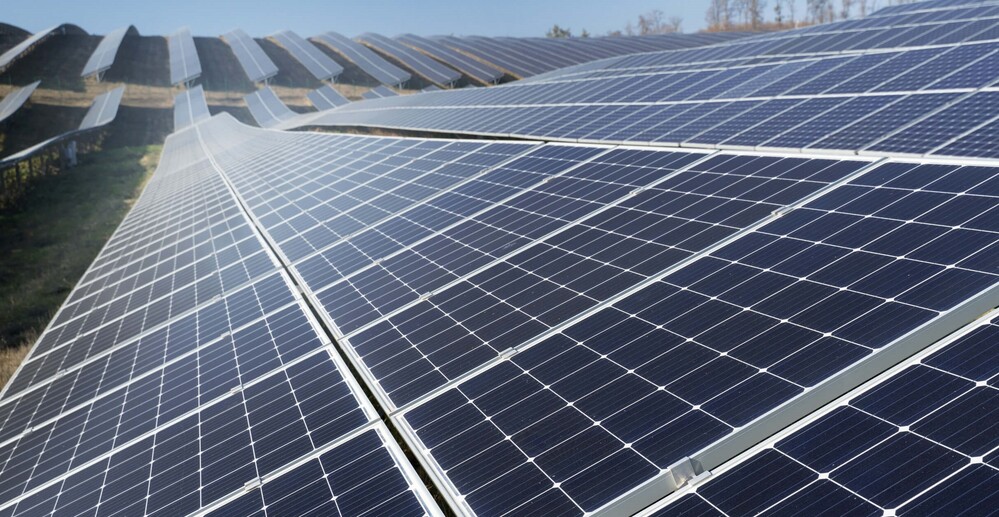Solar Energy
It is a renewable source of energy that we can get from the sun thanks to the electromagnetic radiation it emits. It is a renewable source of energy that we can get from the sun thanks to the electromagnetic radiation it emits. The sun emits energy in the form of short-wave radiation, and before 30% reaches the surface of continents or oceans, it passes through the atmosphere, where it is weakened by the process of diffusion and reflection of gas molecules in clouds. absorbers and suspended particles. Despite these processes, the energy of solar energy is so great that the energy received in one hour is equal to the world’s energy consumption in one year. This is why the development of green solar technology is so important and will bring huge global benefits in the future, helping to reduce pollution, reduce climate change, improve sustainability and reduce dependence on renewable energy.
Types of solar energy
And how to use solar energy? With solar collectors or photovoltaic panels, both heat and sunlight can be harnessed and converted into heat or electricity. These examples of energy constitute active solar energy and consist of solar energy technologies that require external equipment to capture, convert and distribute solar energy. The benefits of solar energy can also be harnessed passively by designing and building spaces that retain heat or let in more natural light. Let’s see how the different types of solar power work.
Photovoltaic energy
Photovoltaic solar energy converts solar radiation into electricity through photovoltaic cells due to the so-called photovoltaic effect. Photovoltaic energy is generated through solar panels with photovoltaic cells, which typically consist of a thin layer of phosphor and crystalline silicon, semiconductor materials that ionize and emit electrons when they receive direct light. The sum of several electrons produces current and electricity.
There are two types of photovoltaic installations:Installation of photovoltaic panels for individuals: for homes, businesses, neighborhoods or solar farms that usually install less than 100 kW. They can be networked or isolated.
Photovoltaic plants: The installed power of these facilities can reach 1,500 kW. They require a lot of space and are designed to meet the energy needs of large and medium-sized populations. You may have heard of solar panels, however, this is not something we see often and very few people really know how they work. . In this post we’ll go over everything you need to know about solar panels, how they work and what their benefits are. What are photovoltaic solar panels?
Solar panels act as an intermediary to use sunlight for energy. They convert the sun’s radiation thanks to the photovoltaic effect, through a multitude of cells, called photovoltaic cells.
How do photovoltaic cells work?
By connecting this solar cell to an electrical circuit and at the same time receiving solar radiation, this will produce a charge of electrons which will start to circulate and generate a current charge.
How many types of photovoltaic cells are there?
Currently, there are many types of photovoltaic cells. Many of them differ according to their composition or nature.
Multicrystalline silicon: Multicrystalline silicon cells are very good in performance, however, it is slightly lower than crystalline silicon, this is clearly reflected in low light. These are distinguished by being cheaper than crystalline silicon.
Crystalline Silicon: These cells are much more expensive than those mentioned above, which means that their use is not as common. Although its price is higher, so is its performance and quality. Why is it advisable to use these panels?
This is a great opportunity to apply both at home and in companies, as it is something that can be completely accessible and generates huge savings on the electricity bill, especially for companies. In addition, it is a help of great for taking care of the environment, thanks to the fact that the energy it generates is 100% created by solar radiation. Various investigations are currently being conducted to improve the system and make this new technology deliver better results with each passing day and be much more effective than today.
Undoubtedly, the technology is on the way of evolution and in a few years the traditional methods of energy generation will be abandoned to use these new mechanisms that besides being very useful for people, help a lot in the fight against pollution. With this post, you can understand everything about solar panels.

